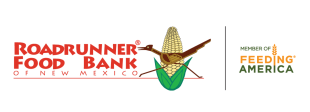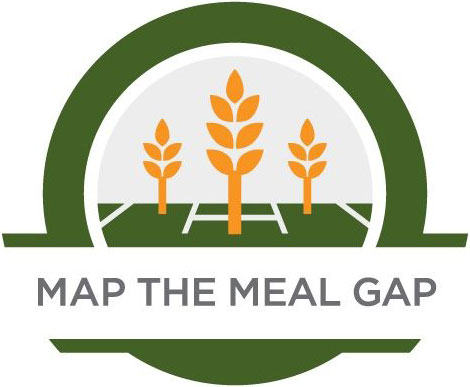MAP THE MEAL GAP
The latest Map the Meal Gap report provided by Feeding America® was released in spring 2023 with 2021 food insecurity data. As in previous years, the report shows hunger and the cost of food at the state, county and congressional district level. The study also looks at the “meal gap” shortfall by state, county and congressional district.
Food insecurity is a research measure defined by the USDA as lack of access, at times, to enough food for an active, healthy life for all household members.
What the Map Says about New Mexico
Map the Meal Gap 2023 confirms that hunger exists in every county in Roadrunner Food Bank’s service area. Map the Meal Gap is the only study that provides local-level estimates of food insecurity and food costs across the United States. The study also includes food insecurity rates for several racial and ethnic groups at the local level and reveals that disparities can vary greatly by population and place.
Hunger rates range for the state as a whole shows New Mexico’s hunger rate is higher than national rates. The release of the report in mid-2023, shows the 2021 hunger rates in the state were 13.5 percent compared to 10.4 percent nationally. New Mexico has the seventh highest hunger rates among all states when looking at the entire overall population.
For children, 19.2 percent of kids in the state are at risk of hunger compared to 12.8 nationally.
In addition, the report shows that the cost per meal is $3.35 and that the meal gap for New Mexico is 50,391,800 meals. The reported annual food budget shortfall for people at risk of experiencing food insecurity is more than $168,875,000 in New Mexico alone.
Children and Hunger
Map the Meal Gap 2023 revealed that New Mexico children face hunger at much higher rates than the overall population. As a state, New Mexico ranks second highest for childhood food insecurity behind Louisiana (21.6 percent). The data released shows one in five children is at risk of hunger, or 19.2 percent of all children in the state.
Rankings by County
Top Five New Mexico Counties for Child Hunger
- Luna County – 29.8 percent
- Quay County – 29.7 percent
- Sierra County – 28.7 percent
- McKinley County – 27 percent
- Catron County – 25.9 percent
Top Five New Mexico Counties for Overall Hunger
- McKinley County – 20.9 percent
- Luna County – 20.6 percent
- Sierra County – 18.8 percent
- Socorro County – 18.6 percent
- Cibola County – 18.3 percent
It is important to note that the New Mexico counties listed above are all in primarily rural or frontier communities often defined as “food deserts” – geographical areas that have limited access to affordable, healthy and nutritious food options.
Hispanics, Latinos and African Americans
The study for the second year includes food insecurity rates for several racial and ethnic groups at the local level and reveals that disparities can vary greatly by population and place.
According to the report, the state is made up of 49.6 Hispanics or Latinos. Food insecurity rates among Hispanics in the state are 14 percent or 1 in 7. In addition, African Americans make up 2.1 percent of the state’s population. Of the group in New Mexico, 21 percent or 1 in 5 are food insecure households.
Interactive Map and Data Visualization
For more information about Map the Meal Gap, visit this interactive map. Additional resources can be found via Tableau Public.
Further Reading
You can read the full Map the Meal Gap executive summary for more insight into what the data means for America. View a map by county here. You can also request any states data tables or congressional district including New Mexico’s data here.
Details About the Study
Feeding America’s Map the Meal Gap is the only study that provides local-level estimates of food insecurity and food costs across the United States and has been produced by Feeding America for the last 12 years now.
Dr. Craig Gundersen, Snee Family Endowed Chair at the Baylor Collaborative on Hunger and Poverty and a Professor in the Department of Economics at Baylor University and a member of Feeding America’s Technical Advisory Group is the lead researcher of Map the Meal Gap. The study is supported by Conagra Brands Foundation and NielsenIQ.
To explore the various research tools and briefs available from Feeding America, visit feedingamerica.org/research.

